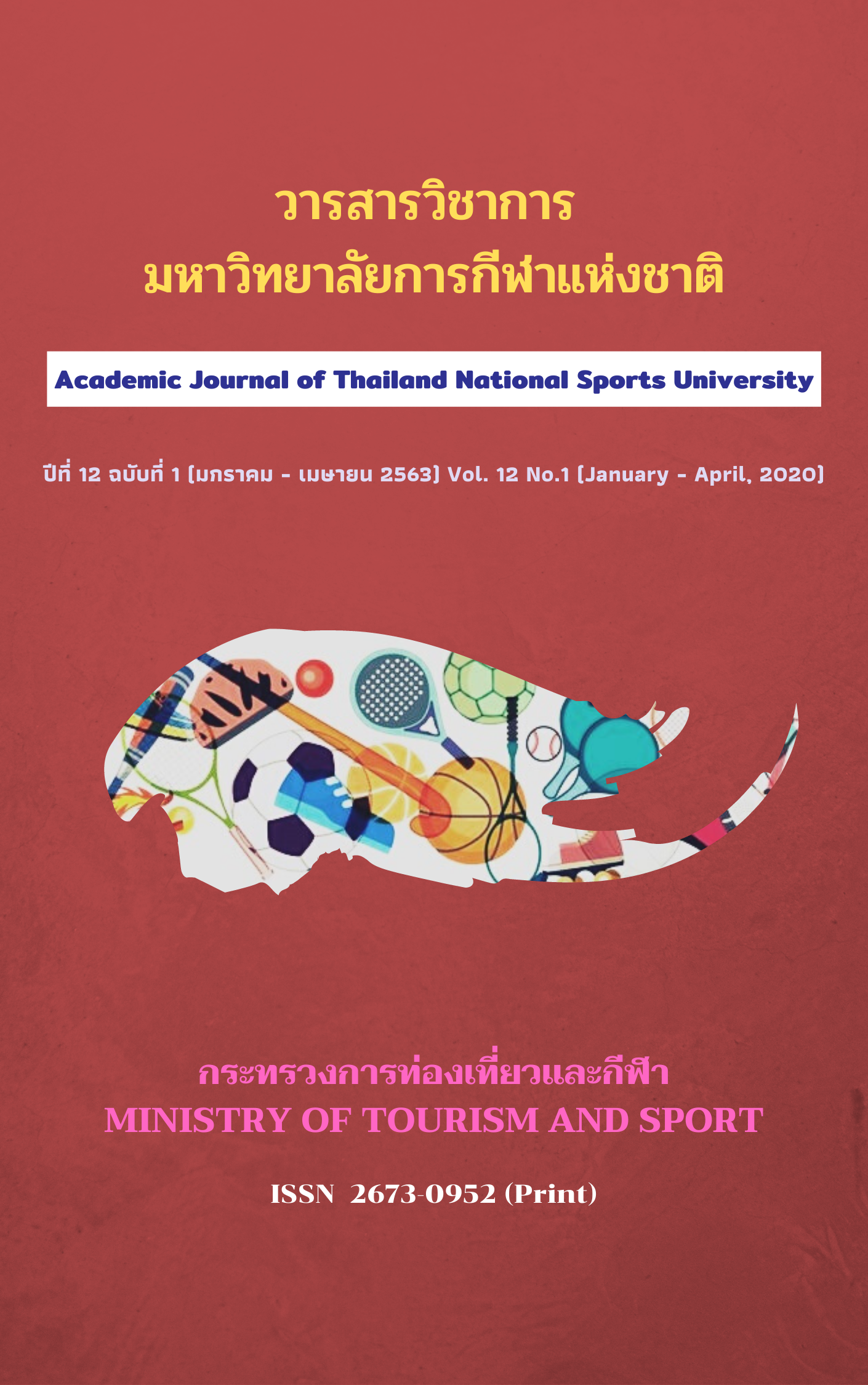THE EFFECTS OF CRAWL STROKE SKILLS TRAINED BY EXPLICIT TEACHING FOR 1ST GRADE NON – SWIMMERS AT PIBOONBUMPEN DEMONSTRATION SCHOOL, BURAPHA UNIVERSITY
Main Article Content
Abstract
This research aimed to study and compare the effects of crawl stroke skills trained by explicit teaching for 1st graders non - swimmers of Piboonbumpen Demonstration School, Burapha University. The samples were 1stgrade students of semester 1, academic year 2017. Twenty students were selected by using Chomwatana’s Crawl Stroke Skill Evaluation, and they were divided into the experimental group and the control group. Ten students in the experimental group were trained by explicit teaching and ten students in the control group were trained by conventional methods. The training period covered eight weeks, one day a week and two hours a day. Swimming skill tests were conducted before and after the training. The data were analyzed in terms of mean and standard deviation.
The research results revealed: 1) Leg kicking skill: Before training, the mean score of the experimental group was = 1.50, and the mean score of the control group was
=1.80. After training, the mean score of the experimental group was
= 11.90, and the mean score of the control group was
= 5.00. There was a statistically significant difference at the 0.05 level. 2) Crawling skill: Before training, the mean score the experimental and the mean score of the control groups was
= 0.00. After training, the mean score of the experimental group was
= 13.20, and the mean score of the control group was
= 5.10 There was a statistically significant difference at the 0.05 level. 3) Breathing skill: Before training, the mean score the experimental and the mean score of the control groups was
= 0.00. After training, the mean score of the experimental group was
= 12.80, and the mean score of the control group was
= 1.00 There was a statistically significant difference at the 0.05 level. 4) Crawl stroke skill: Before training, the mean score the experimental and the mean score of the control groups was
= 0.00. After training, the mean score of the experimental group was
= 13.10, and the mean score of the control group was
= 1.10 There was a statistically significant difference at the 0.05 level.
Article Details
The published article is a copyright of the Academic Journal of Thailand National Sports University. The passage appeared in each article in this academic journal is a perspective of each author which is not related to the journal. Each author is required to be responsible for all components of his/her own article. If there are any mistakes, each author must be responsible for those mistakes on his/her own.
References
Bureau of Non-Communicable Diseases. (2017). Survival Swimming Curriculum and Handbook. Nonthaburi: Affairs Office Printing the War Veterans Organization of Thailand (WVO).
Jiramat Tanakunatirot, Krittapon Pitthachai and Jirawat Kajornsilp. (2018). The Effect of swimming training with elastic and paddles upon swimming speed butterfly stroke 50 meters. Academic Journal Institute of Physical Education, 10(2), 161- 172.
Sirichai Chomwattana, (2009). The construction of the front crawl stroke rating scales and norms for Prathomsuksa 3 of Sangsom School. (Master’s thesis), Kasetsart University.
Somkual Pothong. (1989). Effects of two teaching program upon the crawl stroke swimming ability. (Master’s thesis). Srinakharinwirot University.
Sukol Ariyasajsiskul and Kritsana Arunchote. (2018). The effect of pneumatic resistance weight training on 50 meters crawl swimming speed. Academic Journal Institute of Physical Education, 10(2), 203-220.
Suwat Klinkesorn. (2016). Swimming. Bangkok: Center for Innovations Textbooks and Academic Papers, Faculty of Education, Chulalongkorn University.
Tissana Khemmani. (2008). The Science of Teaching: Knowledge for Organizing Effective Learning Process. (7th ed.). Bangkok: Chulalongkorn University.


